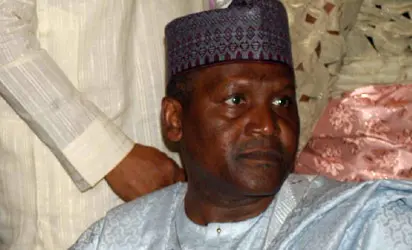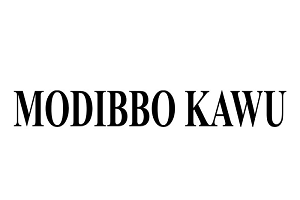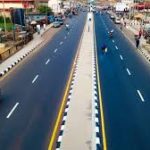ON Thursday, August 27, 2015, I joined a long list of Nigerians in Lagos, for the hour-long flight to Douala, Cameroun, a city and country I have not visited in about 21 years. A few days earlier, I had received an invitation from Aliko Dangote to the commissioning ceremony of the $250 million dollar, 1.5 million metric ton cement plant, located at the Base ELF, Douala.
It was certainly a very important economic development initiative in Cameroun, because it was the main story in English and French, on radio most of that afternoon. But in a sense, the story of the day, was not even the ceremony itself, but the way nature expressed itself, because we visited during the Central African rainy season and the rains had welcomed us into Cameroun, and as we discovered, the approach to the marquee laid up for the ceremony was also soaked up in knee height water, so getting out of the bus was a real feat! But the rains didn’t dampen the enthusiasm of the community receiving such a huge economic boost from Africa’s richest man, nor washed away the fact that, in his inimitable way, Aliko Dangote was, in a manner of speaking, cementing his way (no pun intended!) right into the grand development of the African continent.
On the same day, THE GUARDIAN newspaper reported that Dangote Cement had signed a $4.34billion deal with a Chinese construction firm, Sinoma International Engineering Company Limited, to build integrated cement plants in 11 countries in the next two years.

They include Nepal in Asia (3million tons); Ethiopia (2.5m); Kenya (1.5m); Zambia (1.5m); Senegal (1.5m); Niger Republic (1.5m); Mali (1.5m); Cameroun (1.5m); Cote D’Ivoire (1.5m) and Ghana (1.5m). And just last week, I saw a report and accompanying pictures of his visit to Zimbabwe and the plan to build a huge cement complex in that country.
A couple of weeks earlier, the $400million Dangote cement complex had been commissioned in Ndola, Zambia. And with a market capitalisation of $14billion dollars, the Dangote Group has the largest production complex on the African continent and it has also set eyes on expansion into Asia. This is an incredible story of a conscious effort at developing Africa’s productive forces, since cement is central to the construction process that can unlock Africa’s economic potentials. Remarkably, an African entrepreneur is at the heart of these stunningly progressive developments.
I have not sat down with him to explore the man’s mind and what really drives him, but Aliko Dangote has taken pan-Africanism to a different height; and he is confronting the challenge of African development, with the cement factories that he has commissioned or is planning to set up all over Africa. Job opportunities are directly created with these new factories and they have an immediate impact on the economic potentials of host communities in the African countries while there are also multiplier effects on what they call the entire value chain.
The African economies certainly become better and the remarkable fact that an African entrepreneur is directing these developments, challenges the dominant patterns of capitalist relationships of the centre-periphery, between imperialism and the neo-colony, that has been the hallmark of Africa’s relationship with the West for generations. These are very important developments of a progressive strain of “Africapitalism”.
I had written critical pieces in the past about Aliko Dangote, especially when he first emerged in the Forbes’ Billionaires List. I argued then, against the fetishism being made of Dangote’s personal capitalist success. It was good to be a billionaire I said, but if there was no social purpose to the money he made, then it was not relevant to society. To his credit, Aliko Dangote took our criticisms on board and since then, he has established the Dangote Foundation that is putting a lot of money into socially worthy causes all over Nigeria.
That must be acknowledged along with the incredible work that he does with his pan-African development of industrialisation at a level that should shame the colonial powers. In centuries of colonial domination, they plundered our continent; left underdeveloped and often broken societies, that succeeding elites ran, as caricatures of the dictatorship of colonialism, with dominantly arrested developments and kleptocratic, personalised power. This is the old trend that Aliko Dangote’s industrialisation drive, with the cement companies, is challenging all across Africa.
He is creating wealth and a new African working class, and in settings that can only redound to the benefit of our continent. When Aliko Dangote made the transition from importing finished consumer commodities to industrialisation, he made an important transition from what Chinese Communists used to call a Comprador bourgeoise into a genuine industrialist, a real national bourgeoise, but he has even taken developments into the pan-African scene and he is expanding into Asia. Those who set up the Bandung Conference of African and Asian countries in April 1955, on the eve of decolonisation, would have been proud of Aliko Dangote’s industrialisation process today. I think we should welcome what Aliko Dangote is doing all over Africa: cementing Africa’s economic development!
The political symbolism of dressing
TWO issues of dressing have triggered this piece today. First was a picture newspapers carried a while ago, of the leadership of the Nigerian Football Association (NFA) visiting President Muhammadu Buhari. Each member of the delegation was dressed in babanriga, including the chairman, Amaju Pinnick, who looked very much like a Northerner.
It was an expression of the powers of symbolism: a new leader is at the helm and he is Northern, therefore, the new becomes reality reflected in dressing. The second picture came from the All Nigerian Editors’ Conference that held in Yenagoa, Bayelsa state. The new President of the Nigerian Guild of Editors, Garbadeen Muhammed, wore a Niger Delta dress, with a “Resource Control” hat in tow. Jocularly, I phoned him to say I had edited his name, from Garbadeen Muhammed to Garbadeen Godswill Godspower Government Owei Muhammed! The symbolism was also very apt; Nigerian Editors were meeting in Bayelsa, so the president dressed in solidarity with the host community. Nigerian politicians, especially those contesting for presidency, normally produce posters with pictures targeted at different parts of the country: Northern dresses target the North; the Yoruba ‘power shift cap’ is worn to appeal to the Southwest, while a red cap and beads will target the Southeast and the dress with the golden chain and golden buttons with an accompanying ‘resource control’ hat will be looking to harvest South-south votes.
In the lead to the last election, President Muhammadu Buhari had an incredible makeover, dressed in ways that he did not, in previous attempts at the Nigerian presidency. He reflected the “Federal Character” of Nigerian dressing as he moved from one part of the country to the other! The Saraki family used to have a rather unique approach. There would be posters that emphasized their Yoruba roots and their names (Olushola for the late father and Bukola for the son) for posters in the Yoruba speaking region, while Abubakar will be prominent in posters distributed in Northern Nigeria. In the long run, it was all about the extraction of mileage out of the power of symbols.
During the Second Republic, 1979-1983, the long Shagari cap was very much the dominant symbolic wear and Nigerian newspaper cartoonists never stopped drawing caricatures of the cap. And who cannot see the symbolism of the glasses that Bola Tinubu wears and the associational intentions with Chief Obafemi Awolowo and even the continued popularity of the Awo cap amongst Yoruba politicians who lay claims to the Awoist tradition? The vestment is very much part of the myth making often exploited for political or ideological advantages.
Ideological advantages
In 1999, a strong political current swept President Obasanjo to power. The annulment of the June 12, 1993 elections had badly shaken Nigeria and one of the points of elite consensus that took Nigeria away from the brink, was the political decision to field only Yoruba candidates for the presidency. General Obasanjo faced off with Chief Olu Falae. When Obasanjo came to power, the good old Yoruba cap became the symbol of the new period of ‘power shift’. Nigerian politicians took a cue from Obasanjo. The same pattern was reflected in the years that President Goodluck Jonathan was at the helm with the ‘power shift’ hat; even former Vice President Namadi Sambo wore them quite regularly to show loyalty to his boss. In politics clothes and caps represent a very powerful expression of values.
But there even older symbolic expressions associated with religion in Nigeria. Islam came to the land that became Nigeria over a thousand years ago and part of the baggage is a tradition of dressing which expresses entrance into the world of Islam and its symbols all over the old Western Sudan. In the same way, there are patterns of dresses, which are directly related to the commencement of Christian missionary activities in Nigeria. These are still dominant in the ways and manner that each religious community continues to reflect its origins.
In 1324, the famous Emperor of Mali, Kankan Musa performed the pilgrimage to Mecca and on his return journey, came home with a famous architect that was commissioned to design the great mosque of Tombouctu. It set a standard of design and construction that was copied and reproduced, or inspired related efforts all over West Africa.
So when I told my friend, Garbadeen Muhammed, that I have added a few Izon (Ijaw) names to his original name, given his conversion to “Resource Control” dressing two weeks ago in Yenagoa, I was merely attempting to show the very strong symbolic powers of dressing in the political space of Nigeria. There is no politician that will underrate the power of symbols and dresses and often express those symbols in a very powerful and politically relevant manner.
Sam Nda-Isaiah: Vindicated
WHEN Nigerian banks published a long list of their debtors a couple of weeks ago, Sam Nda-Isaiah, the publisher of the LEADERSHIP group of newspapers, was a troubling presence on that list.
Those of us who know Sam were naturally worried but he was as combative about protecting his name and protesting his innocence, as ever. And his vindication came eventually, because on August 31, 2015, Heritage Bank wrote him a letter which acknowledged that it erred by including Nda-Isaiah’s name on their list: “We wish to state regretfully that the inclusion of Banana Republic Limited, your name and that of your wife on the list was done in error”, according to Heritage Bank.
It added that it “holds you, your family and Banana Republic in high esteem. Again, we regret whatever insinuation or public harm done to your person”. I am very delighted that Sam Nda-Isaiah has been vindicated!

